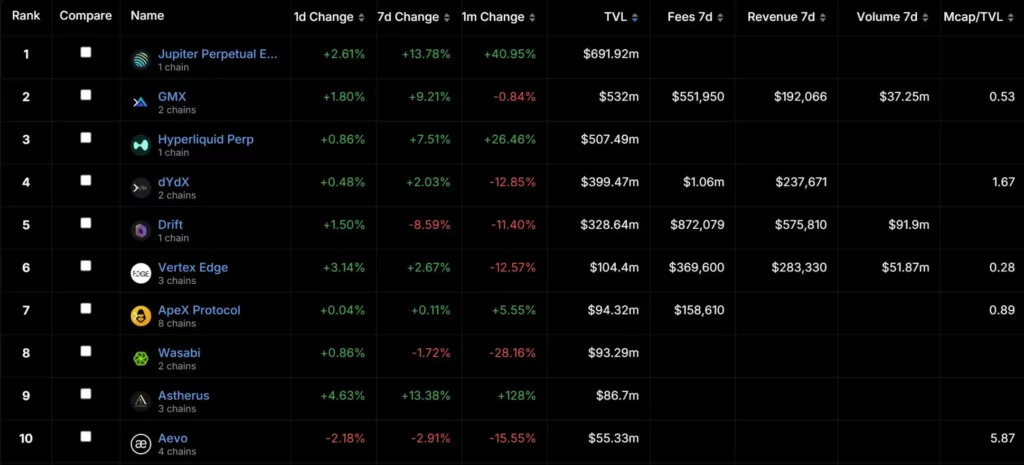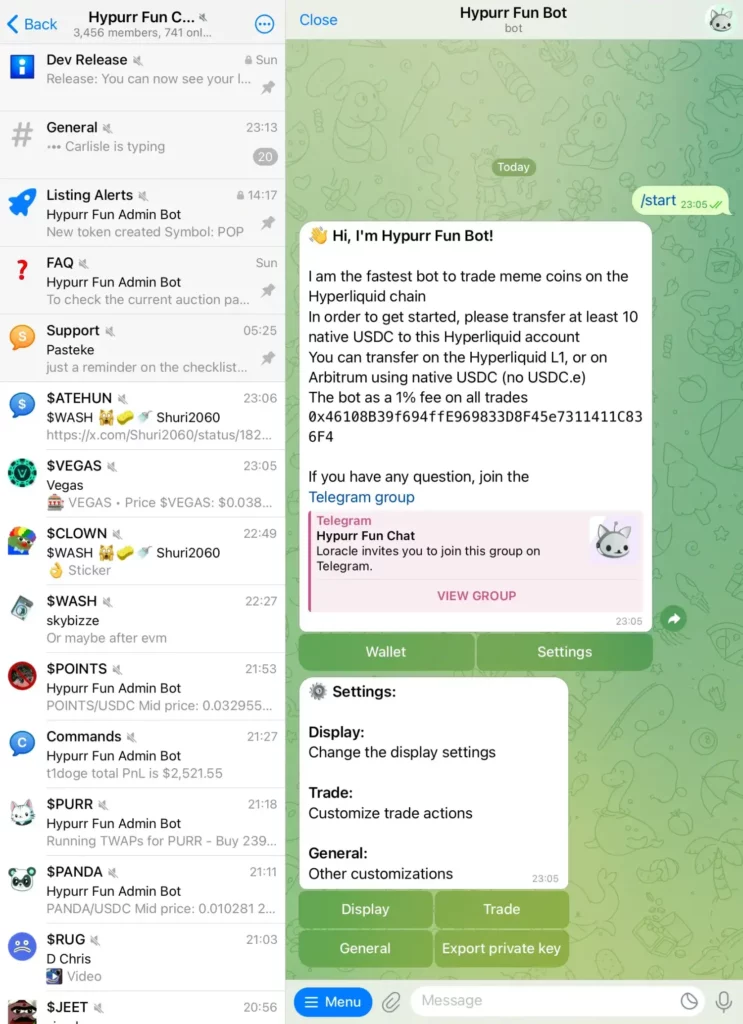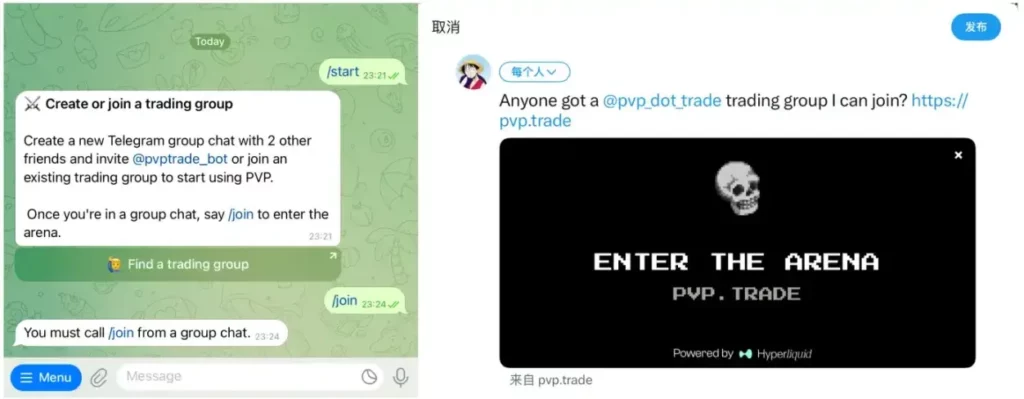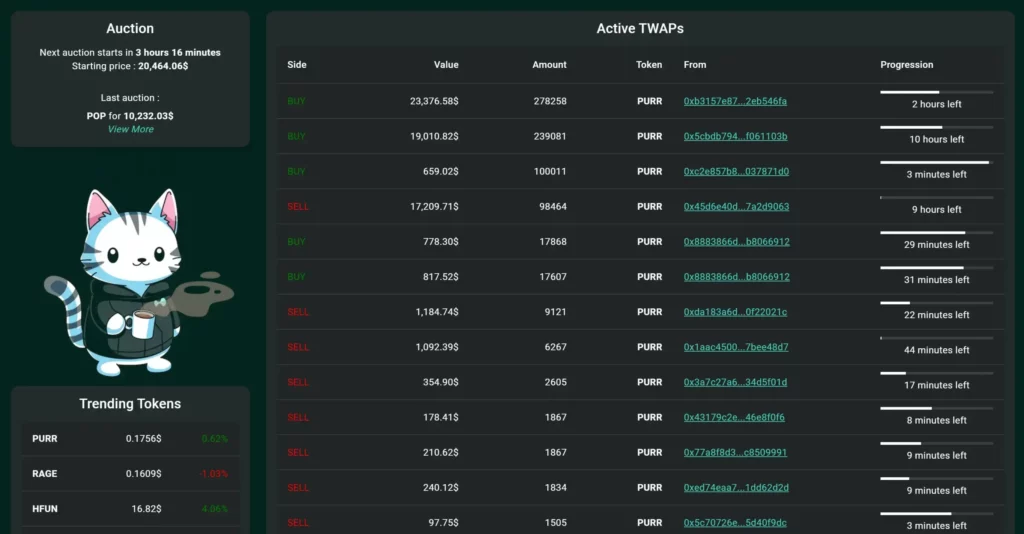TVL Surpasses dYdX: A Look at New Projects in the Hyperliquid Ecosystem
After the “85” crash, besides JLP, which has become the “best dollar-cost averaging target,” Hyperliquid has emerged as another perpetual DEX worth watching. On August 7th, Hyperliquid’s daily trading volume surpassed $4.3 billion, reaching an all-time high. At the same time, its web traffic also hit a record high, with all services running smoothly without any downtime.
What is Hyperliquid?
Hyperliquid focuses on being a Perp DEX and continuously strives to increase its user base, trading volume, and market share, making it one of the hottest Perp DEXs in the English-speaking community. According to its official website, Hyperliquid has accumulated over 190,000 users, with 132 tradable assets.
As a perpetual contract platform, Hyperliquid is often compared to dYdX. According to DeFiLlama, Hyperliquid’s TVL has grown to around $510 million, surpassing dYdX by about $100 million, making it the third-largest in the derivatives sector (with Jupiter ranking first and GMX second).


However, Hyperliquid is not limited to being just a DEX. Its vision is to build a high-performance L1 chain and optimize the DeFi primitives built on it. This application chain is manually constructed by the team, using only Tendermint for consensus. Reportedly, it can handle up to 20,000 operations per second, including orders, cancellations, and liquidations—about 20 times the current capacity of dYdX v3.
On May 1st, Hyperliquid concluded its six-month-long first-phase points program. Currently, the L1 phase points program is ongoing, having started on May 29, 2024, and planned to last four months. The total supply of PURR, Hyperliquid L1’s first native token, is 1 billion tokens, with 50% proportionally airdropped to Points holders and the other 50% permanently locked in the PURR/USDC liquidity pool through the “Hyperliquidity” mechanism.
The issuance of PURR is based on two permissionless native token standards developed by Hyperliquid. The first is HIP-1, which allows the deployment of native tokens and the creation of on-chain spot order books. The second is HIP-2, an innovative “Hyperliquidity” mechanism that permanently locks liquidity in the spot order books of HIP-1 tokens, creating synergy with user order liquidity.
Anyone can deploy HIP-1, but it’s not as easy or cheap as on pump.fun; deployers must participate in a 31-hour Dutch auction to secure their chosen stock symbol. Since Hyperliquid’s native token is not yet live, Dutch auction winners will pay gas fees in USDC.
Hyperliquid aims for anyone to be able to build on Hyperliquid L1, much like how Amazon built enough infrastructure to launch AWS. Currently, community users and developers have begun building new applications on Hyperliquid L1. Coindarwin has summarized some of these applications and provided brief introductions.
Hypurrfan
Hypurrfan is a community-made TgBot primarily focused on Hyperliquid’s token deployment process. It offers a comprehensive set of tools, including token information, new releases, auction details, and trading bots similar to Banana Gun or Unibot.
Hypurrfan allows users to trade any token on the Hyperliquid L1 spot market using a sniper feature, manually setting maximum exposure and market cap. Hypurrfan will automatically buy the target token immediately after listing and handle the rest.
Before using Hypurrfan, users must deposit at least 10 USDC into their Hyperliquid account. The bot saves users’ trading records and generates comprehensive reports to track historical profits and losses. Hypurrfan has a referral fee, where users can earn 10% of the fees from those they refer. 100% of trading fees are directly used to buy $HFUN.

Telegram: https://t.me/HypurrFunBot
pvp.trade
pvp.trade is another TgBot on Hyperliquid, allowing users to add it to their trading groups to track each other’s positions, trade in real-time, share alpha, and either copy or counter-trade.
To use pvp.trade, it must be manually added to a trading group chat. Searching for trading groups on the private message page will redirect users to Twitter for posting. Once the existing Hyperliquid account is set up, and a wallet address and API key are connected, pvp.trade can be used.
pvp.trade does not host funds in any way, allowing the bot to read positions and trades but without the authority to withdraw any funds. Currently, pvp.trade has secured the PVP stock symbol on Hyperliquid and will have a points program to reward users for using and promoting the bot.

Twitter: https://x.com/pvp_dot_trade
Telegram: https://t.me/pvptrade_bot
Hypurrscan
Hyperliquid’s official resource manager is not suitable for analyzing on-chain activity, so the community developed a new on-chain monitoring tool, Hypurrscan. It is a block explorer for the HL spot market, allowing users to track Dutch auctions, TWAP orders, addresses, and more.
Users can view internal perpetual transfers and TWAP in Hypurrscan’s trading tab, filtering transactions by token name or type/address. The values displayed in Hypurrscan refer to the value of trades, with the value for spot transfers being the current value.
Hypurrscan supports withdrawal transactions and has added an Arbitrum withdrawal path, allowing PURR and USDC withdrawals to Arbitrum. The tool plans to add more features in the future, such as adding open limit orders, real-time token pages, switchable UTC/local time in the txs list, and adding labels to addresses.

Website: https://hypurrscan.io/dashboard
Telegram: https://t.me/hypurrscan
HyperLend
HyperLend is a lending platform aiming to be the first and primary lending platform on Hyperliquid. It revolves around a non-custodial liquidity pool where users can deposit and borrow different assets, offering flash loans that allow users to borrow without collateral.
On HyperLend, users can borrow tokens at variable or stable interest rates, with rates determined by supply and demand to ensure competitiveness. Flash loan fees involve reserve rates and liquidation penalties, with the reserve rate being part of the interest paid to the treasury and insurance fund.
HyperLend token holders are entitled to a portion of the protocol’s revenue and can vote on important governance decisions, such as pool parameter updates, asset listings, and other protocol changes.
Twitter: https://x.com/hyperlendx
Most of the applications mentioned above are still in the conceptual stage. Besides these, there are some projects with little information, like HyperSwap, which aims to be the first native DEX on Hyperliquid L1.
In a previous interview with Coindarwin, Hyperliquid stated that its long-term goal is to make L1 a platform for financial activities. Important things like banks, trading platforms, and even currency itself will benefit from society’s decentralization. For Hyperliquid at this stage, this goal might still take years of effort.